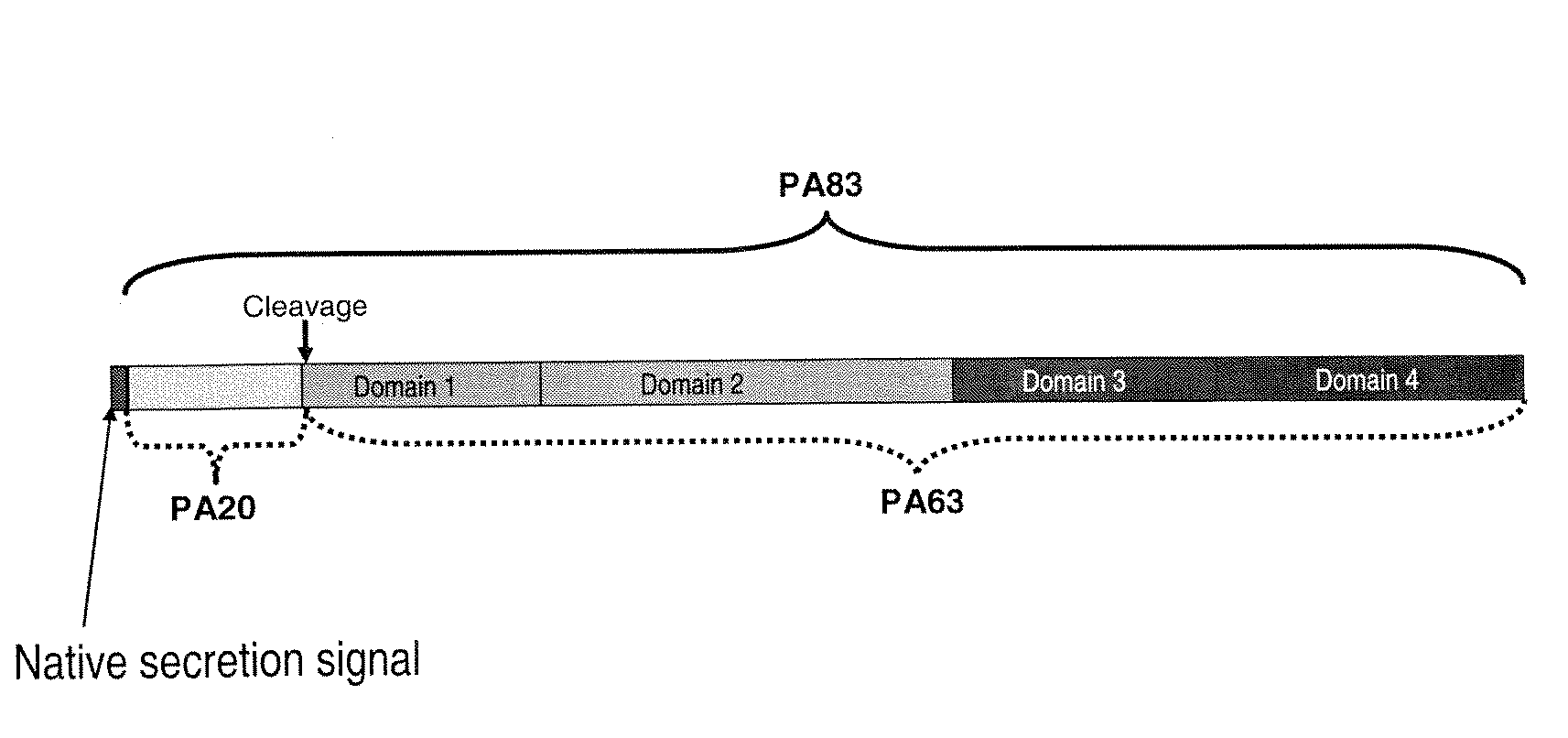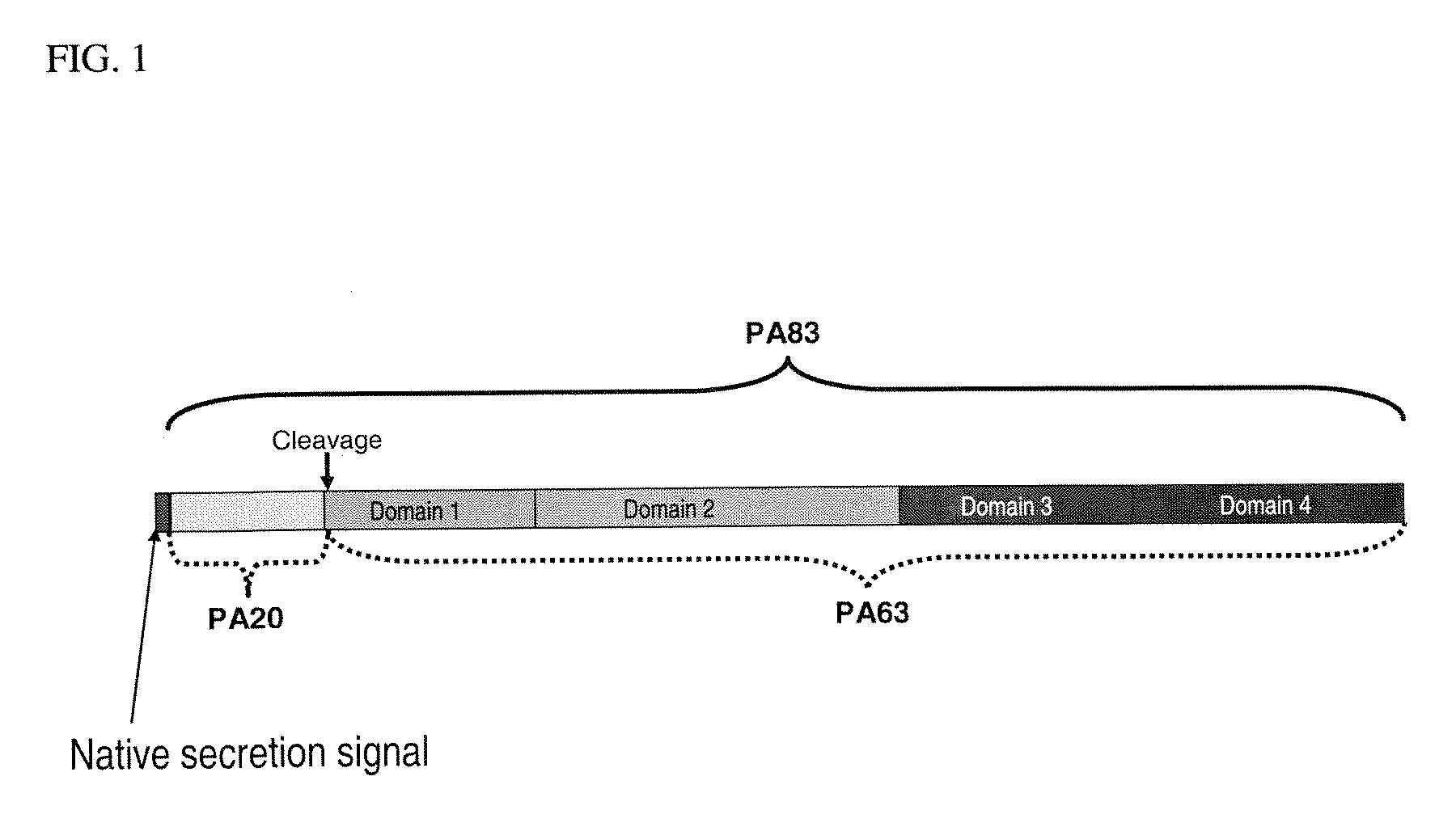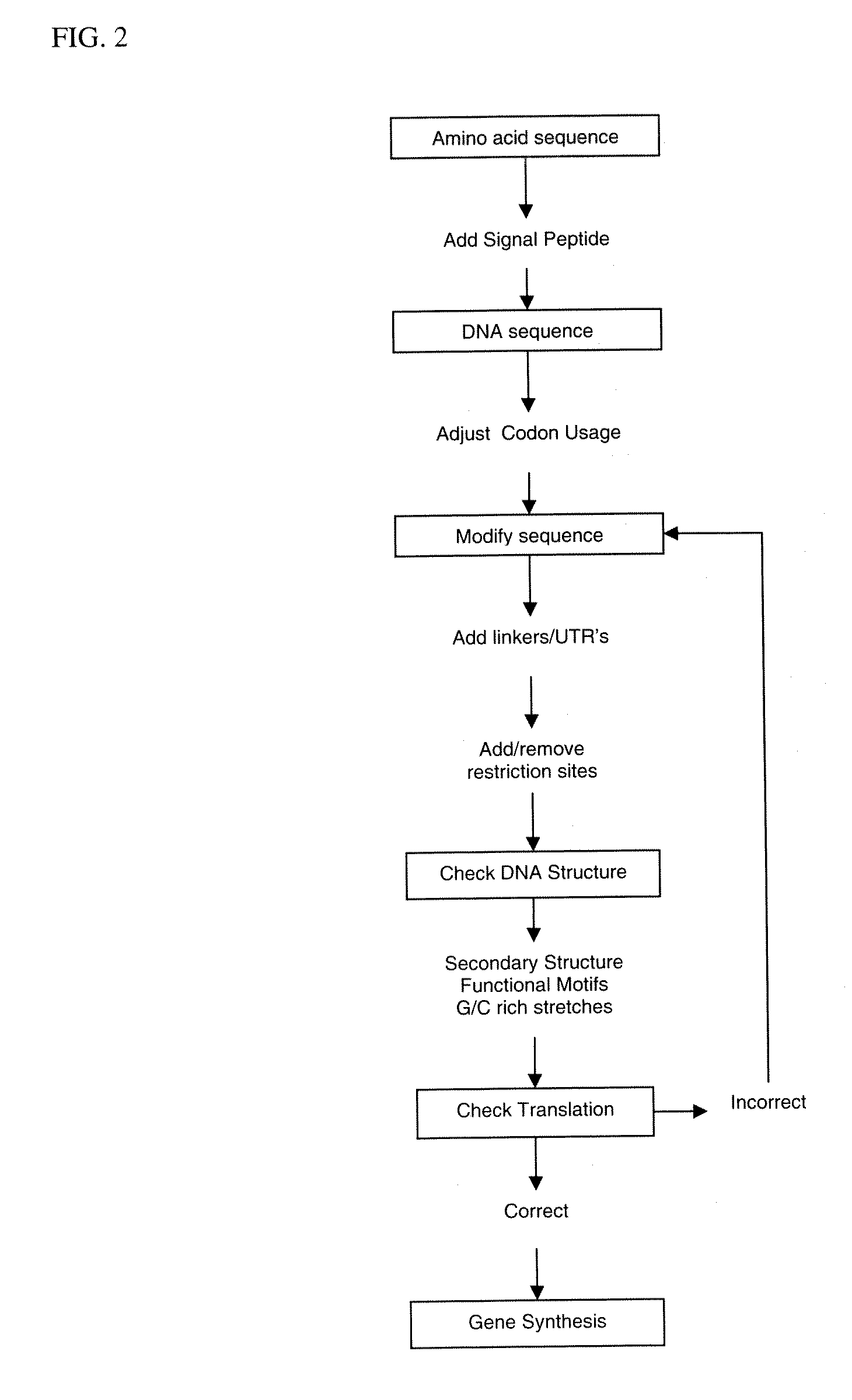RPA optimization
a technology of antigen-based anthrax and optimization, which is applied in the direction of antibacterial agents, peptide/protein ingredients, antibacterial medical ingredients, etc., can solve the problems of infection and pathogenesis, antiphagocytic capsular antigen does not protect against anthrax infection, and spores can be lethal to mammals
- Summary
- Abstract
- Description
- Claims
- Application Information
AI Technical Summary
Benefits of technology
Problems solved by technology
Method used
Image
Examples
example 1
Expression and Purification of rPA from P. fluorescens
[0061]P. fluorescens has been used to express rPA vaccine antigen rPA83 (SEQ ID NO: 1), rPA63, and rPA-D4 (FIG. 1). Codon optimized polynucleotide sequences that contained SpeI and XhoI flanking restriction sites were synthesized. There are a number of alternative sequences for the codon optimized polynucleotide sequence for expression in P. fluorescence that encode the desired rPA including, rPA83His with the native signal and C-terminal His tag (SEQ ID NO: 2), rPA83 with the native signal peptide (SEQ ID NO: 10), rPA83 without the native signal peptide (SEQ ID NO: 11), rPA83 with an N-terminal phosphate binding protein (php) secretion signal (SEQ ID NO: 12), rPA83 with C-terminal His tag and without the native signal peptide (SEQ ID NO: 13), rPA63His with C-terminal His tag (SEQ ID NO: 14), and DrPAd4His Domain 4 with C-terminal His tag. Further examples of alternative polynucleotide sequences encoding for codon optimized rPA8...
example 2
Cloning and Expression of 83 kDa rPA83His with Native Signal in DC454
[0064]Cloning: An rPA insert was excised out of plasmid pJ3:G01196 (DNA 2.0) with SpeI and XhoI. The insert was gel purified on 1% agarose gel and ligated into vector pDow1169, (a medium copy plasmid with RSF1010 origin, pyrF, a ribosome binding site under control of the tac promoter and the rrnBT1T2 terminator from pKK223-3 (PL-Pharmacia)), which had been digested with SpeI, XhoI and treated with Alkaline Phosphatase. The ligation product was transformed by electroporation into P. fluorescens DC454 strain after purification with Micro Bio-spin 6 Chromatography columns. The transformants were plated on M9 Glucose plate after shaking for two hours in LB media at 30° C. The presence of the insert was confirmed by restriction digest and sequencing.
[0065]Protein Expression: Single transformants were inoculated into 50 ml M9 Glucose media and grown overnight. P. fluorescens cultures of 3.0-5.0 OD600 were used to inocula...
example 3
Cloning and Expression of 83 kDa rPA83His Without Native Signal in P. fluorescens DC454
[0066]Cloning: The insert was amplified by PCR with forward primer PA-nosig-SpeI-F 5′-CTACTAGTAGGAGGTAACTTATGGAAGTGAAGCAGGAGAATCG-3′ (SEQ ID NO: 3) and reverse primer PA-Xho-Rev 5′-CCGCTCGAGTCATTAATGATGGTGGTG ATGGTGC CCGATCTC-3′ (SEQ ID NO: 4) with the plasmid pJ3:G01196 as the template. The insert was amplified with the PCR protocol of TABLE 2. The PCR product was purified with Qiaquick PCR purification kit (Qiagen), digested with SpeI and XhoI (NEB) and purified again with Qiaquick kit before ligating into the expression vector with T4 DNA ligase. The ligation product was transformed by electroporation into P. fluorescens strain DC454 after purification with Micro Bio-spin 6 Chromatography columns. The transformants were plated on M9 Glucose plate after two hours shaking in LB media at 30° C. The plates were incubated at 30° C. for 48 hours. The presence of the insert was confirmed by restrictio...
PUM
| Property | Measurement | Unit |
|---|---|---|
| pressure | aaaaa | aaaaa |
| pH | aaaaa | aaaaa |
| soluble | aaaaa | aaaaa |
Abstract
Description
Claims
Application Information
 Login to View More
Login to View More - R&D
- Intellectual Property
- Life Sciences
- Materials
- Tech Scout
- Unparalleled Data Quality
- Higher Quality Content
- 60% Fewer Hallucinations
Browse by: Latest US Patents, China's latest patents, Technical Efficacy Thesaurus, Application Domain, Technology Topic, Popular Technical Reports.
© 2025 PatSnap. All rights reserved.Legal|Privacy policy|Modern Slavery Act Transparency Statement|Sitemap|About US| Contact US: help@patsnap.com



